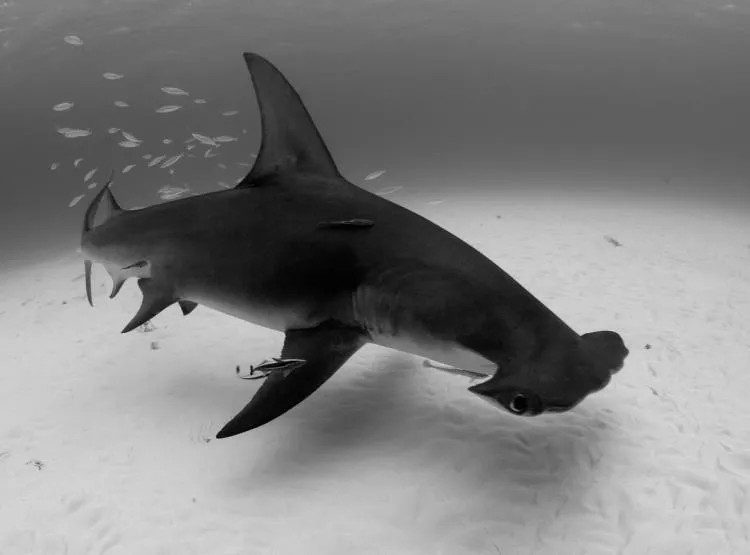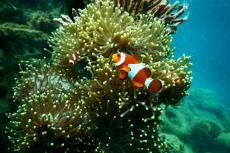Great hammerhead has low genetic variation
DNA analysis reveals that great hammerheads have low genetic variation, which makes them less resilient to adapt to a rapidly changing world.
Genomic data reveals historical population declines and high levels of inbreeding in great hammerhead.
In a recent report by the IUCN Red List of Threatened Species, 31 percent of all shark species are threatened (Critically Endangered, Endangered or Vulnerable). In 1980, only 9 species of oceanic sharks and rays were listed as threatened.
The great hammerhead's critically endangered status is primarily due to heavy fishing for its large fins, which are highly valued in the shark fin trade. Current estimates of population decline in great hammerhead are dramatic; global population reduction was recently estimated at more than 80 percent over the last three generations.
Conservation genomics
Conservation genomics is a field increasing in importance with the continuous improvement in sequencing technologies that afford the ability to assemble high-quality reference genomes. From such single genomes, it is possible to derive estimates of heterozygosity*), inbreeding and demographic history.
Levels of recent inbreeding can also be inferred from runs of homozygosity (ROH) manifested in the genome sequence, and this has emerged as a valuable component in conservation genomic analyses for a wide range of species.
The low heterozygosity which was measured in the hammerhead genome was accompanied by a large number of ROH. The length and number of ROH reflect levels of individual inbreeding, with longer ROH indicative of recent inbreeding and shorter ROH suggestive of more historical events.
Most inbred species
Genome-wide heterozygosity estimates for white shark, whale shark and hammerheads were at the bottom of those of a broad list of fish species and the hammerhead was below the majority of all but a selected few endangered species of mammals.
Heterozygosity reflects long-term processes whereas inbreeding coefficients are indicative of more recent demographic processes, and thus may be more directly informative of contemporary conservation status.
The inbreeding coefficient for hammerhead was almost 9 percent, comparable to or exceeding other examples of critically endangered taxa such as Malayan and Chinese pangolins, South Asian tigers, pumas, and several species and subspecies of wolves.
Fact file
Heterozygous means that an organism has two different alleles of a gene: One version inherited from the mother and one inherited from the father.
Gene diversity, or expected heterozygosity (H), is a common statistic for assessing genetic variation within populations.
Estimation of this statistic decreases in accuracy and precision when individuals are related or inbred, due to increased dependence among allele copies in the sample.
The relationship between the two alleles affects which traits are expressed.



























